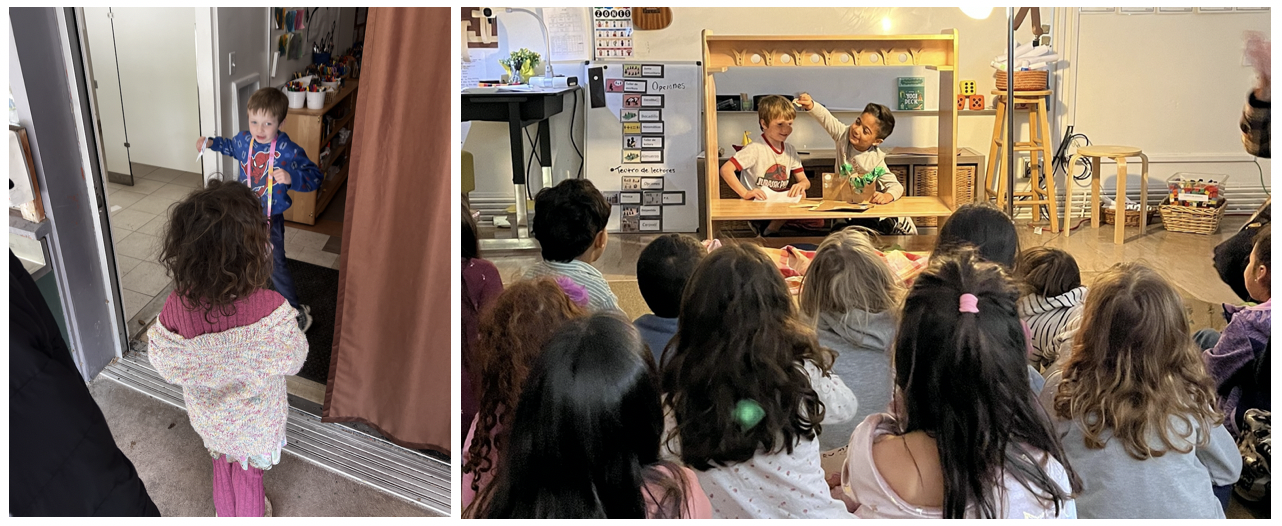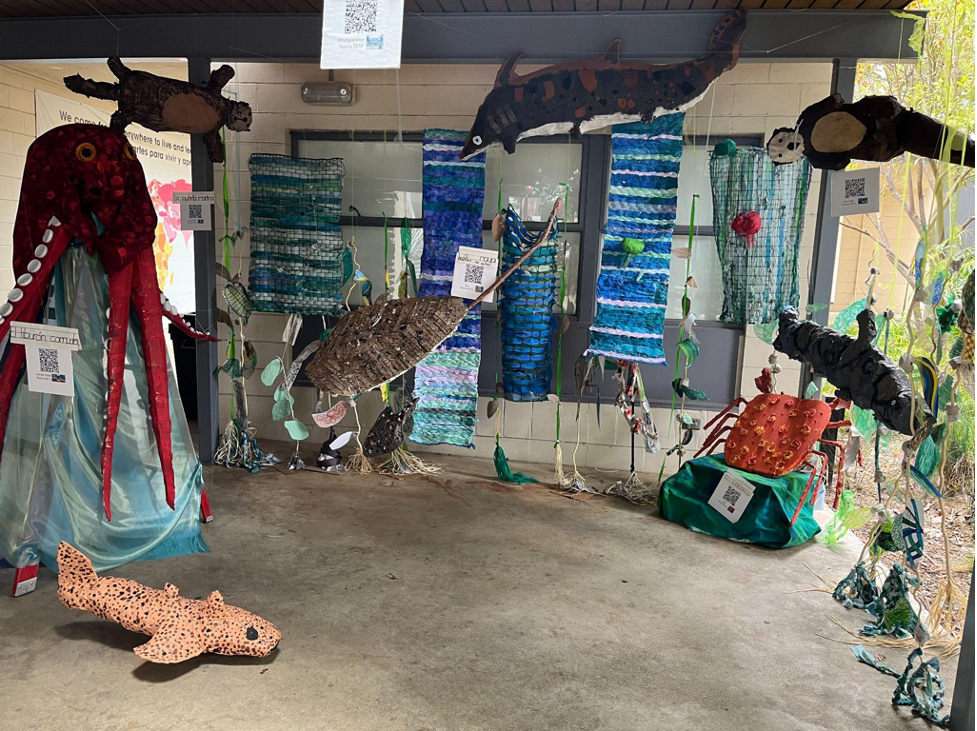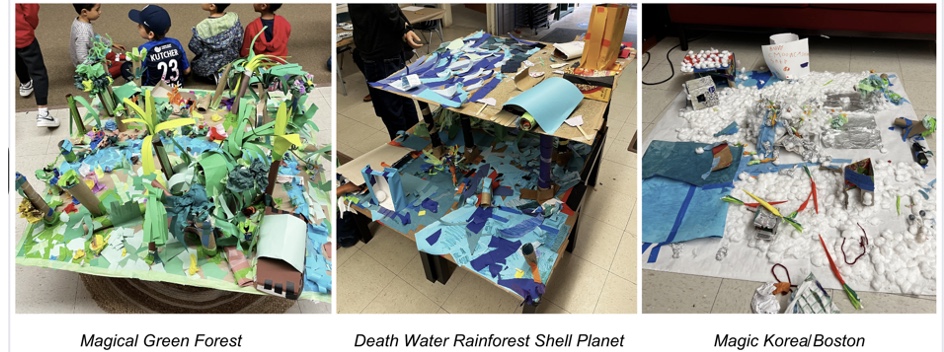In the world of education, innovative approaches are constantly emerging to engage students in meaningful and memorable learning experiences. One such experience unfolded in the lab school classrooms recently as we delved into the fascinating realm of flowers, turning a lesson on flower parts into a dance-filled exploration. But why introduce movement into the learning process and how did this process look like?
Read MoreBlogs
Agency in Storytelling: Dialogue in Wordless Picture Books
Early Childhood -ECII 5 year olds
Literacy, Playful Learning
Early Childhood Education – ECII 5 year olds
During the Winter quarter, I have had the opportunity to observe and participate in research on the importance of wordless picture books with Dr. Christine Lee at CONNECT Research and EC2 demonstration teachers Kelly Peters, Eric Varela, and Arlen Nava. Through this collaboration, I’ve learned how wordless picture books can facilitate language development through creative oral storytelling that allows for an interactive reading experience for students. Wordless picture books are books with illustrations and little to no text. With a lack of words, there is no “right” or concrete indication of what is occurring, leaving ample space to foster a sense of independence in reading. It also lets students read the illustrations in the book to come up with their own stories and have control over how the stories will take place.
Read MoreDiving into Storytelling: A Creative and Theatrical Approach to Literacy
Literacy, Playful Learning
Early Childhood Education – 5 year olds

Image 1. Students lining up in front of the classroom to provide tickets and be seated
During this winter quarter, I had the opportunity to visit the Room 13 Theater as students became the characters from a wordless book called Where’s Walrus? On this day, I watched as the students brought their creative interpretations of the book into a live performance. I lined up in front of the classroom alongside the students of Room 13. A student was waiting at the front of the room, and asked me to put my boleto into his ticket box. “Boletos please”, said the student as he collected the tickets from the class. After I gave him my ticket, he instructed me to sit in the last row. Everyone was seated in the audience, eager to see their peers act out Where’s Walrus?. I was equally as excited. As the teacher drew the curtain, the narrator began storytelling in Spanish. Two main actors took the stage, portraying two characters: one, a security guard relentlessly searching for a walrus that escaped the zoo, while the other played as a walrus cunningly camouflaging itself to elude the guard’s detection.
Read MoreHow Art Transforms Learning at the UCLA Lab School
Primary Classroom 8-10
Playful Learning
Take a walk through the UCLA Lab School at the culmination of this school year and you will be transported into an underwater ecosystem. Primary students (1st and 2nd graders) have spent the past few months learning and creating an immersive kelp forest art installation. Blue waves float above your head and against the wall entangled with a variety of different types of kelp. It doesn’t take long to realize the species richness in this part of the school as you see a flying fish and seal hanging above and a garibaldi fish peeking from its cave.
Worldbuilders and Storytellers: A Creative Play-Based Approach for Literacy Learning
Playful Learning
Magical Green Forest–a world where rivers and flowers have magical healing properties; Death Water Rainforest Shell Planet — a magnificent two-story territory where “super kelp” grow indefinitely; Magic Korea/Boston — a snow filled landscape where friendship, bunnies and carrots abound. These are the enchanting worlds imagined and created by an ECII classroom.

